Saturday, 22 November 2025
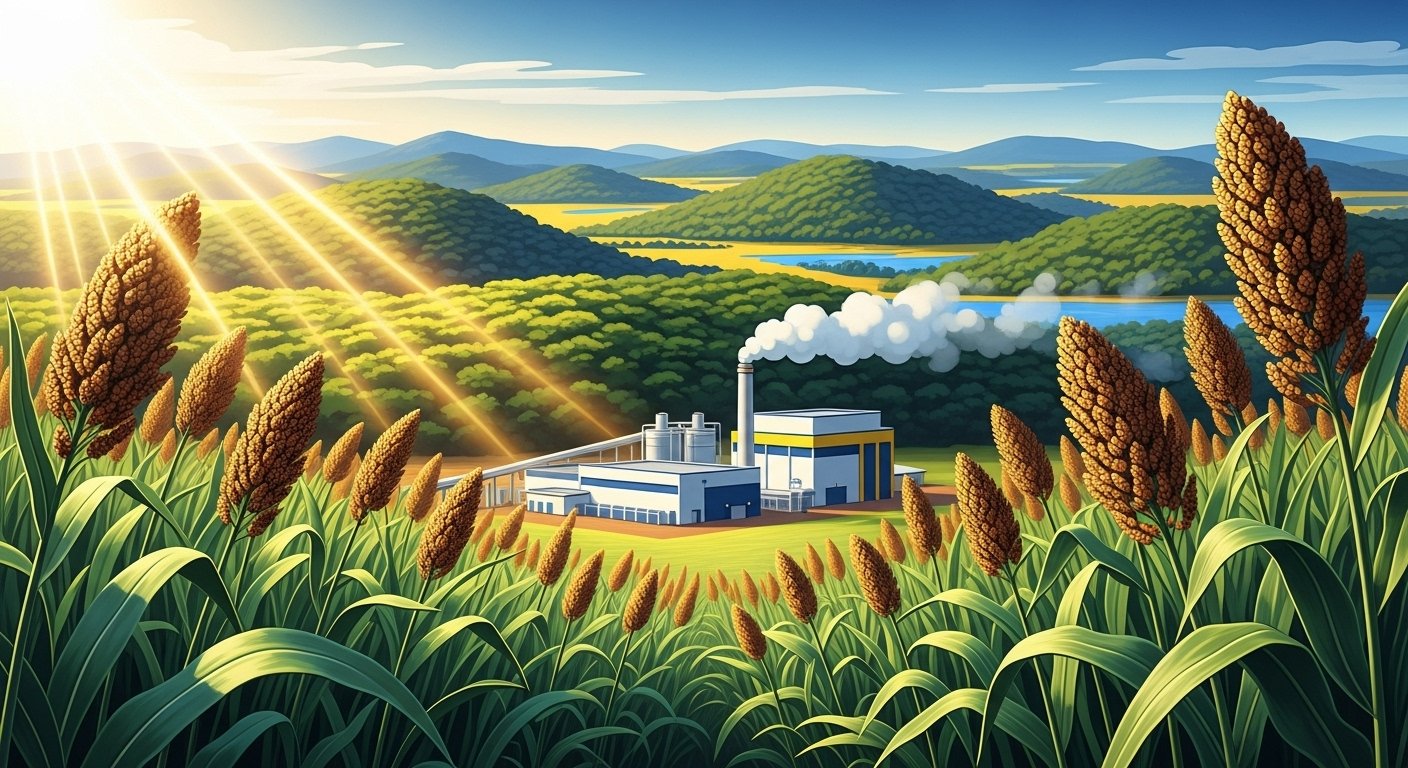
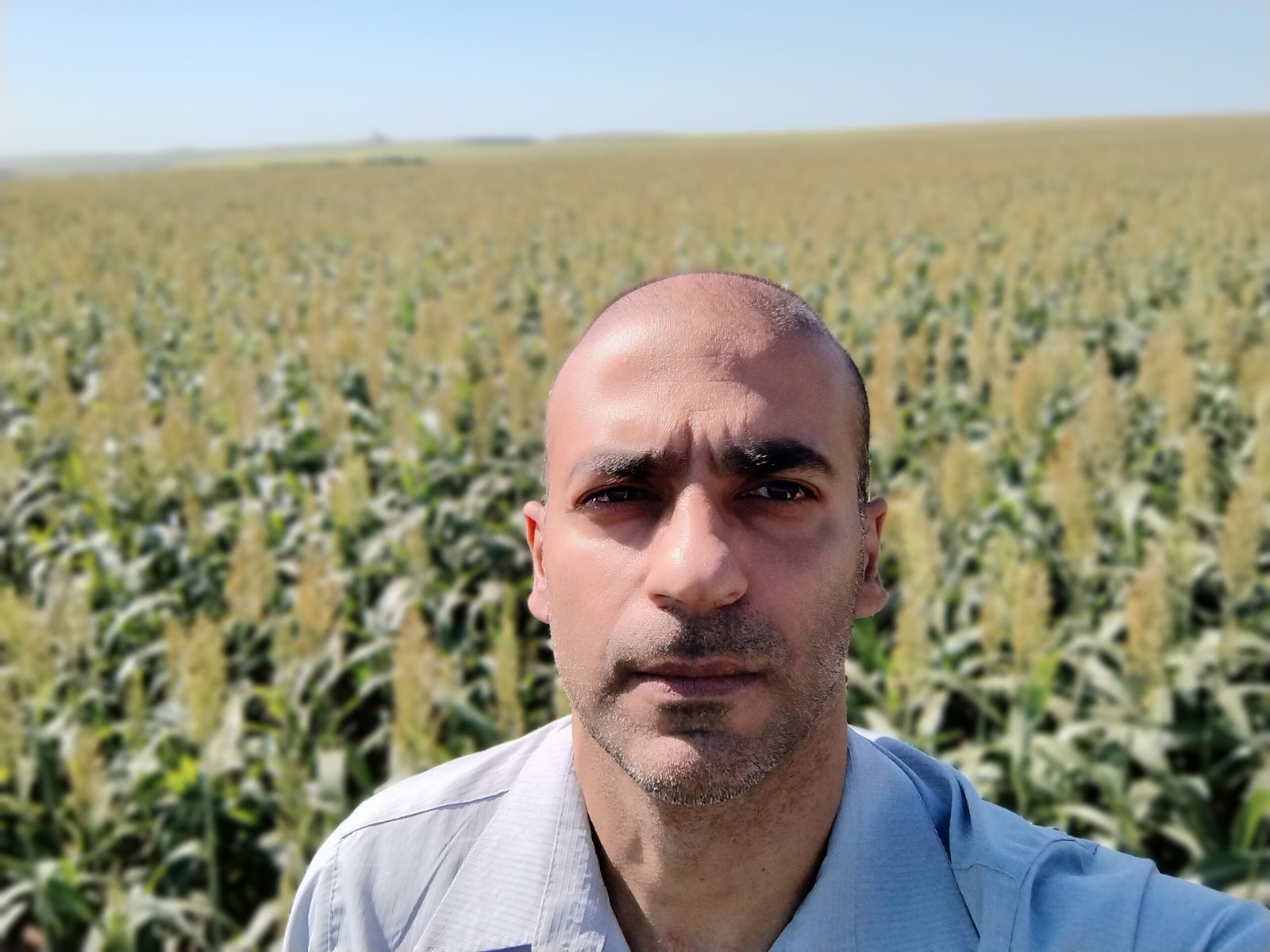
In an exclusive Agrospectrum interview, Alexandre Ferreira da Silva, Research Scientist at Embrapa Maize and Sorghum, reveals why sorghum is no longer just a supporting player—it’s becoming a star of Brazil’s bioenergy revolution. With unmatched drought resilience and off-season planting advantages, sorghum acts as climate insurance while supercharging existing corn ethanol plants. High-starch hybrids and valuable co-products like DDG are driving its economic edge, making every hectare count. Silva highlights how RenovaBio’s carbon credit program turns sorghum’s low-carbon profile into a tangible revenue boost. Looking beyond borders, Brazil’s sorghum is poised to hit the global stage, with China emerging as a key export destination, signaling a new era for the crop in energy and trade.
Brazil has long been the gold standard in sugarcane ethanol. Why is sorghum now entering the conversation, and does it represent an insurance policy against climate volatility or the next growth frontier?
Brazil’s bioenergy matrix is widely recognized as a global model of sustainability and efficiency, historically supported by ethanol production from sugarcane. However, the sector has undergone significant diversification in recent years, driven by the quest for greater resilience and the expansion of production into new agricultural frontiers. National biofuel production reached a record volume of almost 46 billion liters of ethanol and biodiesel in 2024, a milestone that reinforces Brazil’s leadership role in the global energy transition and the reduction of greenhouse gas (GHG) emissions.
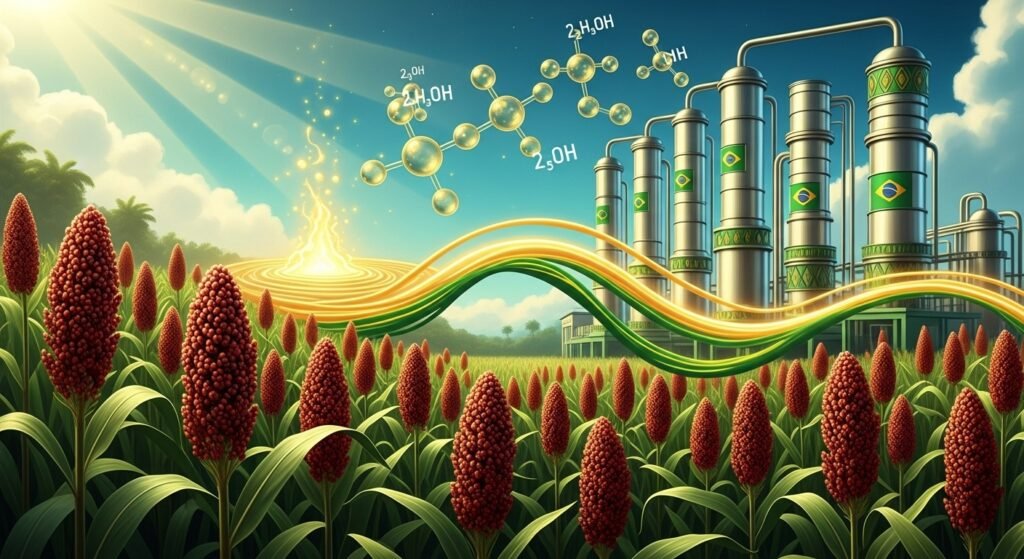
Within this context of growth and diversification, corn has emerged as a protagonist, with its ethanol production growing 25 per cent in the 2024/2025 harvest and reaching 7.6 billion liters. In this scenario, sorghum, which has historically been seen as a supporting actor in Brazilian agriculture, is emerging as a promising alternative and a strategic pillar for the continued expansion of the bioenergy matrix. The rise of sorghum is not a simple market fluctuation but rather a structural change, based on its unique ability to serve as “climate insurance” and its industrial synergy with existing ethanol production chains.
Sorghum’s agronomic resilience, especially under conditions of water stress and high temperatures, provides a direct economic and industrial benefit. Its ability to thrive in regions where sugarcane is not adapted and to maintain productivity even in late plantings reduces the risk of crop failures for producers. For the industry, this predictability in the supply of raw material allows for the extension of ethanol production beyond the sugarcane harvest period, ensuring a stable supply throughout the year. The crop’s physical robustness thus translates into a more secure business model that is less susceptible to climate risks.
While sorghum’s off-season planting and use of degraded pastures reduce direct competition with corn and food crops, how do factors like climate variability, land-use pressures, or policy incentives impact the long-term sustainability and scalability of sorghum for ethanol in Brazil ?
Sorghum is a warm-climate crop with efficient drought tolerance mechanisms, making it ideal for regions with lower water availability. As a C4 plant, sorghum tolerates high levels of solar radiation, responding with high photosynthetic rates and minimizing water loss through its stomata. Although sorghum is resilient, its ideal productivity is achieved at temperatures ranging from 20ºC to 33°C, while temperatures above 38ºC or below 16ºC can limit its plant development.
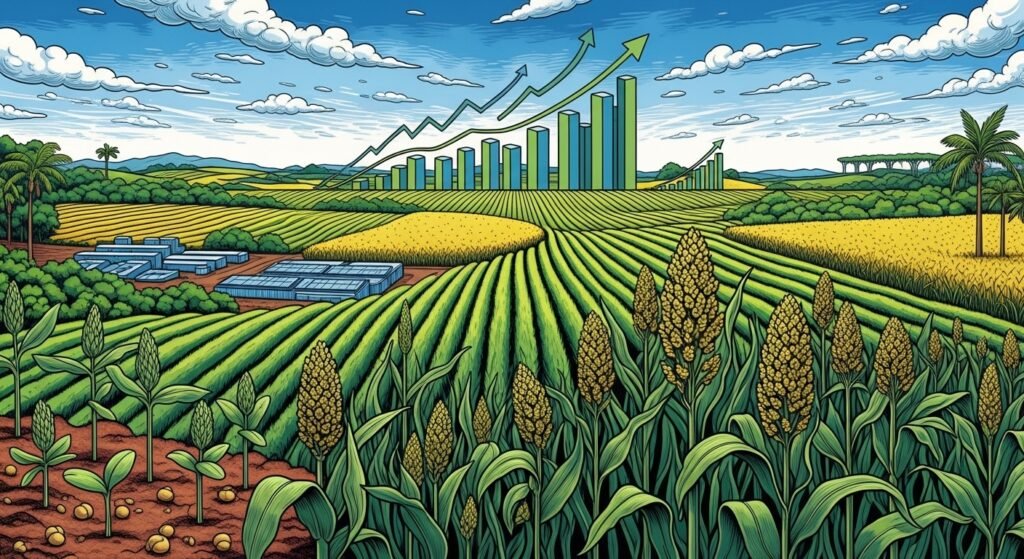
The most significant cultivation strategy for sorghum in Brazil is its positioning in the “off-season,” or second crop, typically planted after the soybean harvest. This planting dynamic provides a crucial competitive advantage, as sorghum maintains good productivity even in later plantings, after February, when corn crops usually experience yield drops. This characteristic eliminates direct competition with corn for more favorable planting windows, allowing sorghum to capitalize on existing areas.
The increase in sorghum cultivation and processing in Brazil reflects a substantial growth movement in the sector. In the 2024/2025 harvest, sorghum production in the country reached 5.96 million tons, a 34.8 per cent growth compared to the previous cycle. This advance was driven by a 9.6 per cent increase in planted area, which reached 1.59 million hectares, and a 23 per cent improvement in the national average productivity, reaching 3,731 kg/ha.
Table 1. Sorghum Production in Brazil: Area, Yield and Production (Conab 2025)
| Indicator | 2024/2025 Harvest | Annual Growth |
| Planted Area | 1.59 million hectares | +9.6 per cent |
| Yield | 3,731 kg/ha | +23 per cent |
| Production | 5.96 million tons | +34.8 per cent |
The expansion of using food crops for biofuel production often raises the global “food vs. fuel” debate. However, the use of sorghum in Brazil minimizes this conflict. As a versatile crop used for both human and animal consumption as well as for biofuel production, sorghum integrates into an agricultural model that, in the Brazilian case, frequently uses the conversion of degraded pasture areas into croplands, reducing direct competition with food production on highly fertile lands.
Given that sorghum’s economic competitiveness relies heavily on high starch content and co-product value, how do variations in hybrid performance, growing conditions, or market demand for DDG affect the reliability of these economic advantages ?
The yield of grain sorghum in ethanol production is equivalent to or even surpasses that of corn, directly depending on the starch content in the grains. Ethanol production is directly correlated with the starch content of the grains. Therefore, knowing the characteristics of each hybrid and the most effective management strategies can lead to gains in ethanol production yield. Obtaining starch contents above 70 per cent is important for sorghum to be competitive with corn. This correlation between a specific agronomic characteristic (high starch content) and the economic viability of industrial processing is a determining factor. The successful development of high-starch hybrids reduces the cost of the raw material per liter of ethanol produced, serving as a technological and economic driver for sorghum’s competitiveness.
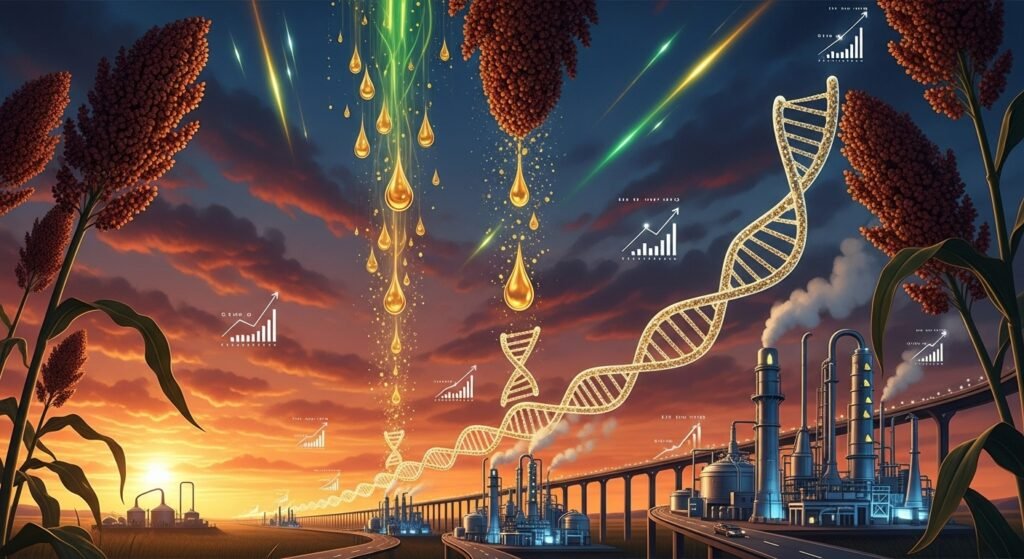
The co-products generated during processing, such as DDG (Dried Distillers Grains), are of high importance for the economic viability of grain ethanol production. Although the sorghum ethanol production process does not yield oil like corn, sorghum DDG is a valuable protein meal for animal nutrition, generating additional revenue that helps offset production costs and increases the grain’s competitiveness.
While sorghum is presented as a cost-effective alternative to corn for ethanol, how do fluctuations in sorghum prices or potential supply constraints affect its economic competitiveness, and does this risk offset the advantages of blending it with corn ?
The economic competitiveness of sorghum as a raw material for ethanol is based primarily on its lower cost compared to corn. Market analysis indicates that during periods of high corn prices, ethanol production from this cereal can become less economically favorable, which reinforces the need for raw material diversification. Additionally, the industrial synergy between sorghum and corn is a key economic factor. Plants that already process corn require only “a few modifications” to their facilities to also process sorghum. This technological compatibility minimizes the capital investment barrier for production expansion.
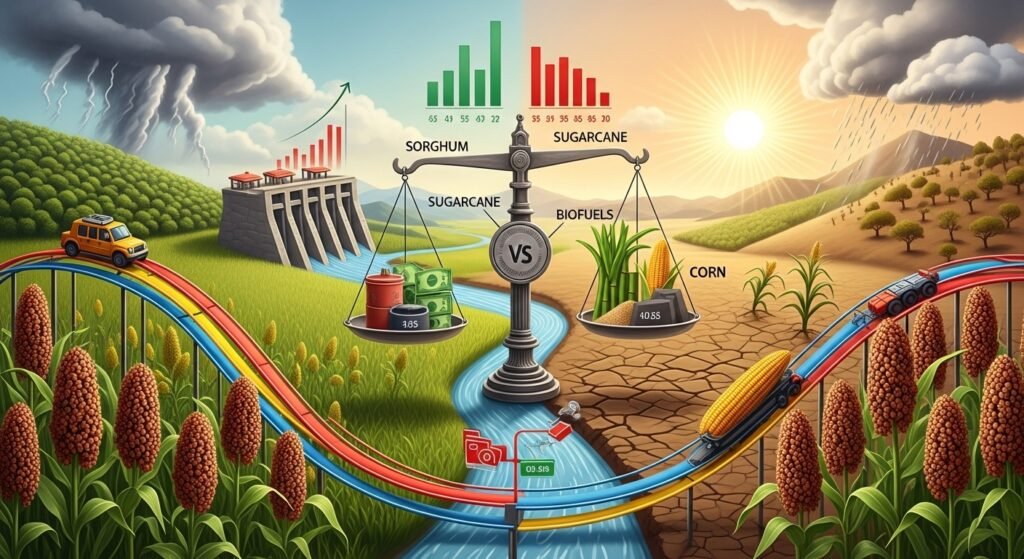
Many plants indicate their intention to work with blends of corn and sorghum, so that the percentage of sorghum used results in the minimum possible alterations to the production line already established for corn ethanol. In this way, sorghum emerges as an economic strategy to amortize production costs. On the other hand, some plants operate with exclusive lines for the production of ethanol from sorghum. These are being strategically installed in areas suitable for its cultivation, associated with the fostering of producers through the predictability of raw material purchase (futures market).
Table 2. Economic Advantage Comparison between Ethanol Raw Materials
| Raw Material | Relative Cost of Raw Material | Ethanol Yield (L/ton) | Value of Co-products | Industrial Adaptation |
| Sorghum | Lower than corn | Similar to corn | High-value DDG | Requires few modifications in corn plants |
| Corn | Higher than sorghum | Reference parameter | DDG and oil | Consolidated industrial facilities |
| Sugarcane | Varies with sugar price | Varies with harvest and genotype | Bagasse, electrical energy, by-products | Requires dedicated facilities |
The low capital investment barrier is the direct cause of the rapid expansion of sorghum ethanol production. With the minimum investment required to adapt existing units, the industry can quickly integrate sorghum into its supply chain, allowing for decentralized and efficient expansion. This synergy between corn and sorghum plants is the main mechanism that elevates the cereal from a simple alternative to a “protagonist” in the Brazilian bioenergy matrix. Sorghum also contributes to the overall competitiveness of the biofuel sector.
Brazil’s RenovaBio has put carbon intensity at the center of ethanol economics. How is sorghum positioned in the CBIO market compared with sugarcane ?
The National Biofuels Policy, known as RenovaBio, is a regulatory framework aimed at incentivizing the decarbonization of the Brazilian transport sector. The program is structured into three main axes: decarbonization targets, production certification, and the market for Decarbonization Credits (CBIOs). The central mechanism is the CBIO, in which each credit is equivalent to one ton of avoided carbon emissions.
To issue CBIOs, the biofuel producer must obtain an Energy-Environmental Efficiency Note (NEEA), which is a value inversely proportional to the carbon intensity (CI) of their product. The carbon footprint of sorghum ethanol is being quantified by EMBRAPA for registration with the National Agency of Petroleum, Natural Gas and Biofuel. The calculator used to calculate the NEEA and CI, called RenovaCalc, is being updated so that sorghum can be used as one of the raw materials.
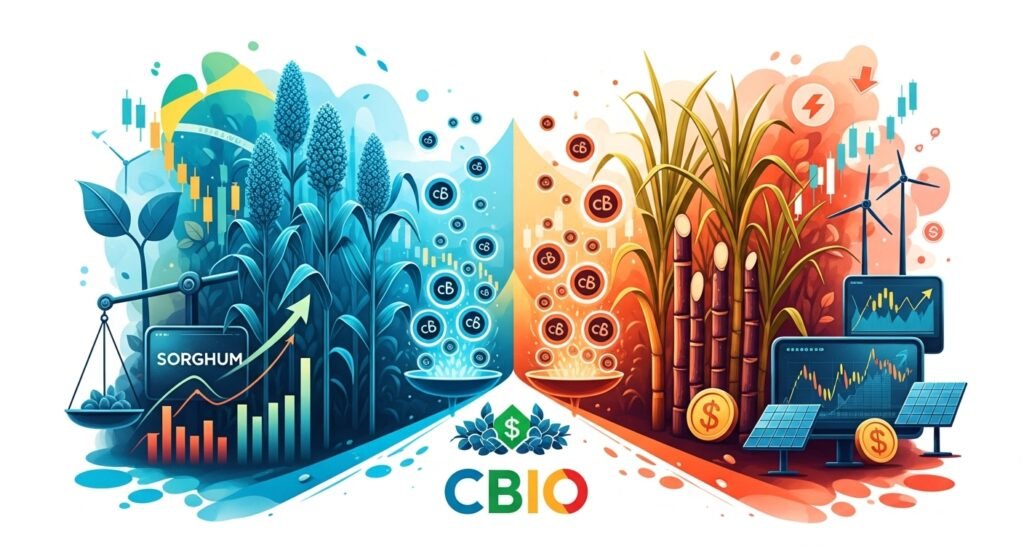
It is believed that its accreditation will increase the interest of certified plants due to the generation of CBIOs. RenovaBio acts as a powerful mechanism that goes beyond mere incentive, creating a feedback loop that directly influences producers’ investment decisions. By monetizing the environmental benefits of a biofuel, the policy makes crops like sorghum more economically attractive, whose sustainable profile translates into an additional revenue stream via CBIOs. In this way, the program not only encourages but financially rewards the adoption of more resilient and lower carbon footprint raw materials, accelerating the diversification and sustainability of the Brazilian bioenergy matrix.
With the U.S. and China dominating global sorghum trade, how does Brazil carve out a role as both a sorghum grower and ethanol exporter ?
In the global sorghum scenario, the United States is the main exporter, followed by Australia and Argentina. Brazil, which historically exported modest volumes, mainly to South Africa and Spain, is positioned for a significant change. Commercial tensions between the USA and China, which resulted in the imposition of tariffs and the suspension of American sorghum imports due to sanitary concerns, created a market gap that Brazil is in a strategic position to fill. China’s urgency in finding an alternative supplier was evidenced by the signing of a “pre-listing” agreement between the two countries. This agreement accelerates the process of qualifying exporters, allowing the Brazilian Ministry of Agriculture to certify and qualify companies, streamlining commercial flow and strengthening mutual trust. The first shipments of Brazilian sorghum to China are expected to begin in 2026, with projections that the new market could demand up to 7.9 million tons per year.
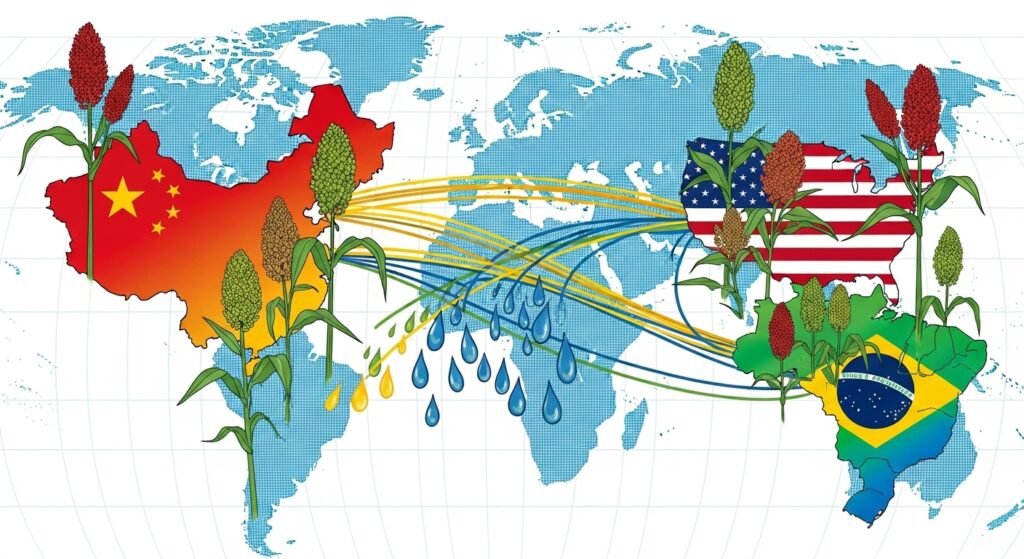
The emergence of a robust export market to China, while it may initially generate an increase in domestic sorghum prices, serves as a powerful catalyst for the maturation of the Brazilian value chain. The influx of guaranteed revenue and the demand from such a large market incentivize farmers to significantly expand the planted area and invest in productivity improvements. This increase in scale, in turn, attracts more investment in plant breeding and processing infrastructure, creating economies of scale and a more resilient sector. The geopolitical scenario, therefore, transforms a potential risk of price increasing into a long-term opportunity to consolidate the sorghum industry in Brazil, promoting both the export market and the domestic bioenergy value chain.
While sorghum is positioned as a strategic pillar for Brazil’s bioenergy resilience, what risks or limitations—such as market volatility, policy changes, or technological bottlenecks—could prevent it from fully realizing this potential ?
The analysis demonstrates that sorghum is a vital and growing component of the Brazilian bioenergy matrix. Its rise is driven by a confluence of technical, economic, and political factors that position it not just as an alternative, but as a strategic pillar for the resilience of the sector. Sorghum offers agronomic insurance against climate variability, an industrial complement that optimizes corn ethanol infrastructure, and a sustainability profile that perfectly aligns it with decarbonization policies like RenovaBio.
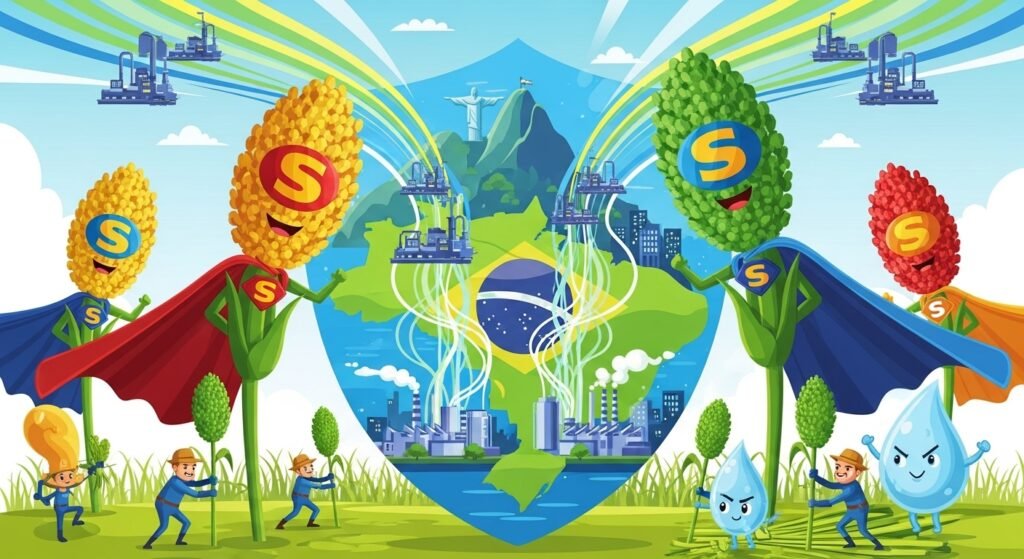
To maximize the crop’s potential, continued and intensified investment in research and genetic improvement is recommended. The focus should be on developing hybrids with higher starch contents for grain sorghum. From a political perspective, the continuous integration of sorghum into national bioenergy strategies is suggested, with policies that recognize and reward its specific environmental benefits within programs like RenovaBio.
In summary, sorghum is on track to become a fundamental element for a more diversified, resilient, and sustainable Brazilian bioeconomy. Its ability to thrive in challenging conditions and to integrate efficiently into existing infrastructure allows the country to meet domestic demand for renewable energy while strengthening its position in the global scenario of food and energy security.
—- Suchetana Choudhury (suchetana.choudhuri@agrospectrumindia.com)